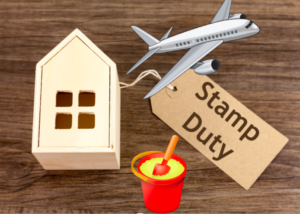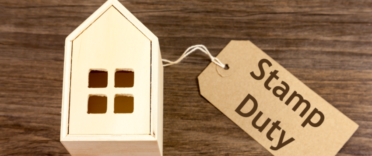
An up-to-date version of this article, with all the information you need about the Stamp Duty holiday, can be found at "Everything you need to know about Stamp Duty".
On the 8th July 2020, the chancellor announced a temporary stamp duty 'holiday', aimed at stimulating the housing market following slow sales and four months of falling house prices. We take a look at how the new stamp duty holiday works, how long it will run for and who it could benefit.
What is stamp duty?
Stamp duty is the land tax owed on a property once the buying process is complete. Stamp duty is tiered and so the amount of stamp duty owed varies depending on the price of the property. Stamp duty is payable on all properties, including commercial, buy to let and second property purchases.
How does the stamp duty holiday work?
The stamp duty holiday is essentially a temporary increase to the nil-rate threshold, increasing from £125,000 (or £300,000 for first-time buyers) to £500,000. This means that any property sold at £500,000 or less in England or Northern Ireland before 31st March 2021 will not attract any Stamp Duty. Those living in Scotland and Wales will also benefit from an increase in the stamp duty nil-rate threshold, rising to £250,000 on the 15th and 27th July respectively.
The amount of stamp duty you will pay over and above this amount will depend on the total price of the property and so is tapered; buyers will pay 5% on £500,001 and £925,000, 10% on £925,001 and £1,500,000 and then 12% on anything over £1,500,001.
Our tables below explain how the two compare, with examples.
Stamp duty payable (prior to the announcement of Stamp Duty holiday)
| Property Value | % payable (Residential) | Stamp duty on £250,000 property | Stamp duty on £500,000 property | Stamp duty on £750,000 property | Stamp duty on £1,000,000 property | Stamp duty on £2,000,000 property |
| Under £125,000 | 0% | £0 | £0 | £0 | £0 | £0 |
| Over £125,000 - £250,000 | 2% | £2,500 | £2,500 | £2,500 | £2,500 | £2,500 |
| Over £250,000 - £925,000 | 5% | N/A | £12,500 | £25,000 | £33,750 | £33,750 |
| Over £925,000 - £1,500,000 | 10% | N/A | N/A | N/A | £7,500 | £57,500 |
| Over £1,500,000 | 12% | N/A | N/A | N/A | N/A | £60,000 |
| Total | £2,500 | £15,000 | £27,500 | £43,750 | £153,750 |
Stamp duty payable (based on new stamp duty holiday)
| Property Value | % payable (Residential) | Stamp duty on £250,000 property | Stamp duty on £500,000 property | Stamp duty on £750,000 property | Stamp duty on £1,000,000 property | Stamp duty on £2,000,000 property |
| Under £500,000 | 0% | £0.00 | £0.00 | £0.00 | £0.00 | £0.00 |
| Over £500,000 - £925,000 | 5% | N/A | N/A | £12,500 | £21,250 | £21,250 |
| Over £925,000 - £1,500,000 | 10% | N/A | N/A | N/A | £7,500 | £57,500 |
| Over £1,500,000 | 12% | N/A | N/A | N/A | N/A | £60,000 |
| Total | £0.00 | £0.00 | £12,500 | £28,750 | £138,750 |
How long will the stamp duty holiday last?
The Stamp duty changes have been introduced immediately in England and Northern Ireland and from 15th July in Scotland and 27th July in Wales. The stamp duty holiday is a temporary measure aimed at stimulating the housing market and so is expected to end on 31st March 2021. (The stamp duty changes are slightly different in Scotland and Wales with the threshold being increased to £250,000)
What does the stamp duty holiday mean for first-time buyers?
First-time buyers will also benefit from the new stamp duty holiday with the nil-rate threshold increasing from £300,000 to £500,000. Stamp duty is then tapered over and above this amount as shown in the table above.
What if I am purchasing a second property?
If you are purchasing a second home or buy-to-let property you can still benefit from the stamp duty holiday. Prior to the introduction of the stamp duty holiday, anyone purchasing a second home would have to pay stamp duty at the usual rate, plus a 3% charge. The stamp duty holiday means that only the 3% charge is payable on property purchases of £500,000 or less.
The tables below show the rates prior to the introduction of the stamp duty holiday and the rates that apply since.
Stamp duty payable when purchasing a second property (prior to the announcement of Stamp Duty holiday)
| Property Value | % payable (Residential) | Second home | Total owed |
| £0-£125,000 | 0% | 3% | 3% |
| £125,001 - £250,000 | 2% | 3% | 5% |
| £250,001 - £925,000 | 5% | 3% | 8% |
| £925,000 - £1,500,000 | 10% | 3% | 13% |
| £1,500,001 + | 12% | 3% | 15% |
Stamp duty payable when purchasing a second property(based on new Stamp Duty holiday)
| Property Value | % payable (Residential) | Second home | Total owed |
| Under £500,000 | 0% | 3% | 3% |
| £500,001 - £925,000 | 5% | 3% | 8% |
| £925,001 - £1,500,000 | 10% | 3% | 13% |
| £1,500,001 + | 12% | 3% | 15% |
Summary
Online property website Rightmove reported record numbers of enquiries following the chancellor’s announcement and had the highest number of daily visits to their site in their 20-year history. Property prices are 2.4% up on where they were in March 2020 with many estate agents reporting a rise in demand for higher-priced property.
It is clear that the stamp duty holiday has provided the stimulus that the housing market was desperately seeking and so now might just be the perfect time to consider getting onto the property market or to make the move to your ‘forever’ home. One thing that isn’t clear however is how the government intends to transition back to the old stamp duty rates. With the stamp duty holiday expected to come to an end on 31st March 2021, those thinking of moving would be wise to do so sooner rather than later so as to avoid any stamp duty complications further down the line.





